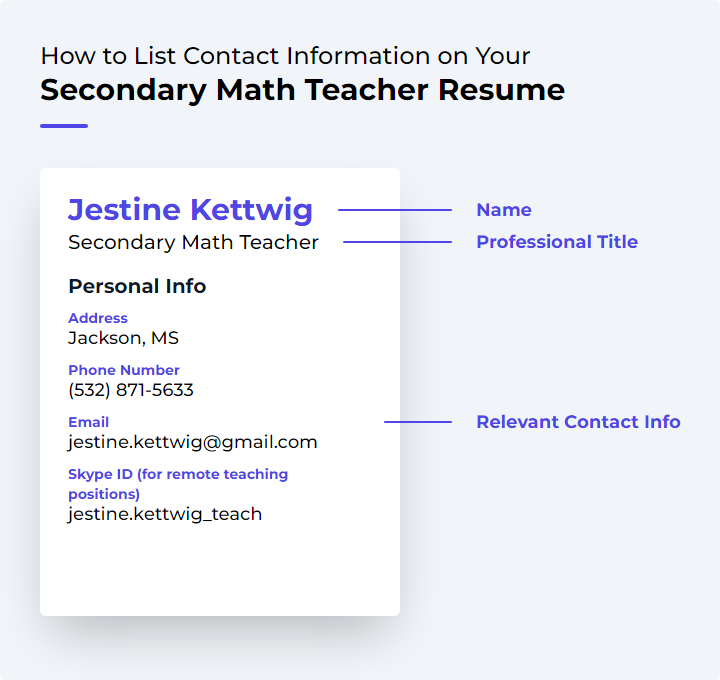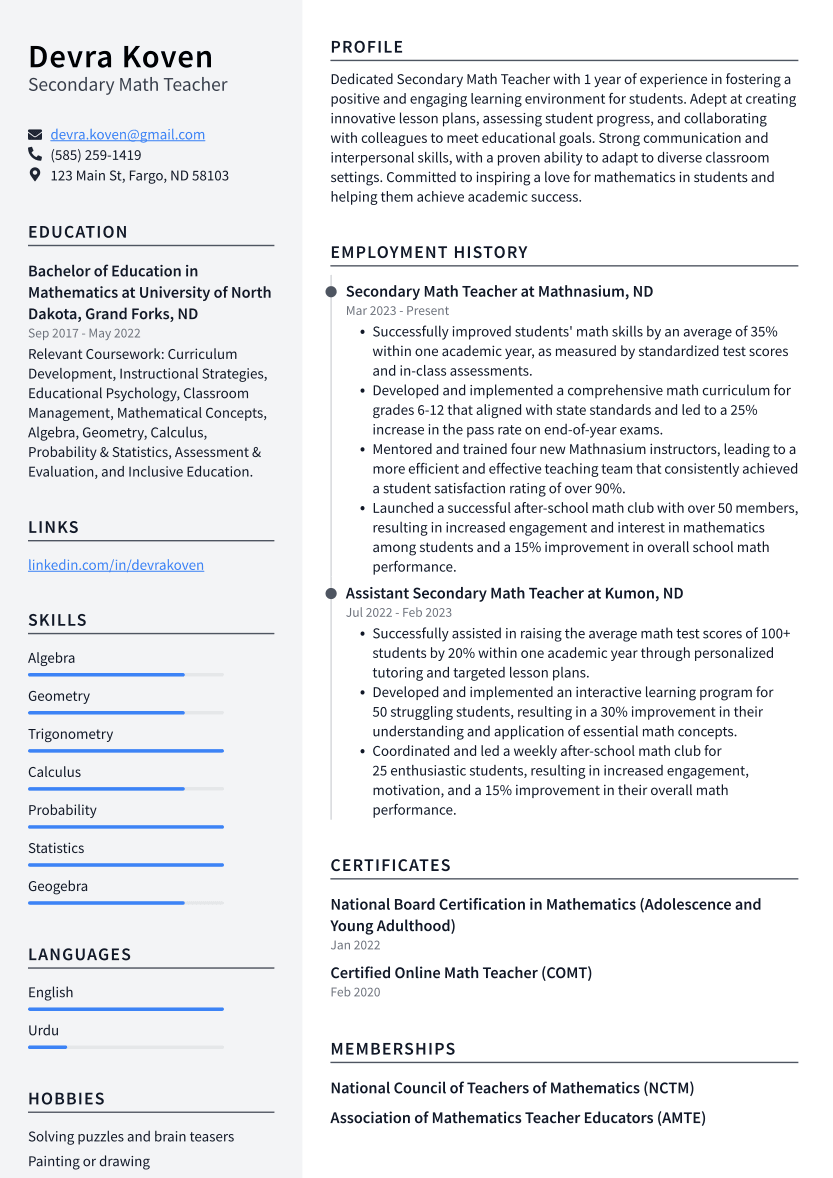Secondary Math Teacher Resume Examples
Writing a great secondary math teacher resume is important because it is one of the first things a potential employer will see when they are considering you for a position. It is your opportunity to make a good first impression and sell yourself as the best candidate for the job.
Create your resume
Select from 7 professional resume templates
If you're looking for inspiration when it comes to drafting your own secondary math teacher resume, look no further than the samples below. These resumes will help you highlight your experience and qualifications in the most effective way possible, giving you the best chance of landing the secondary math teacher job you're after.
Essential Components of a Secondary Math Teacher Resume
A resume for a Secondary Math Teacher is a pivotal document that showcases your qualifications, teaching prowess, and mathematical expertise. It's essential to meticulously craft your resume to capture the attention of prospective employers, highlighting not only your proficiency in mathematics but also your pedagogical skills tailored to secondary education.
Key sections of a Secondary Math Teacher's resume include personal information, an objective statement, employment history, educational background, relevant skills and certifications, achievements, and references. Let's delve into each section, discussing their significance and how to optimize them to stand out.
1. Contact Information
Your Contact Information should be prominently displayed at the top of your resume, ensuring that potential employers can easily reach out to you. This section should include your full name, address, phone number, and a professional email address. Consider adding links to your LinkedIn profile or online portfolio to provide further insight into your professional journey.

Avoid including personal details such as marital status, age, or religion, as they are irrelevant to the job application and could introduce bias. Ensure accuracy in your contact details to prevent missed opportunities due to errors.
2. Objective Statement
The objective statement sets the tone for your resume, succinctly conveying your career aspirations, educational philosophy, and strengths. It should reflect your passion for teaching mathematics and your commitment to fostering a stimulating learning environment.
An effective objective statement might read: "Enthusiastic and dedicated Math Teacher seeking a position at XYZ School to leverage my extensive knowledge of mathematics and innovative teaching strategies to enhance student engagement and academic success."
This section should be concise yet impactful, convincing potential employers of your suitability for the role.
3. Education and Certifications
Begin with your highest degree in the Education section and include any relevant certifications, such as a state teaching license, which is mandatory for public school teachers. Highlight additional training and certifications that enhance your teaching credentials, and don't forget to mention ongoing professional development, which is crucial in the ever-evolving educational landscape.
Ensure that all information is up-to-date and accurately reflects your qualifications.
4. Teaching Experience
The Teaching Experience section is where you showcase your track record in education. List your roles in reverse chronological order, emphasizing achievements and responsibilities that demonstrate your effectiveness as a teacher. Use action verbs and quantify your successes to provide a clear picture of your impact in the classroom.
For those with limited professional experience, include practicum or student-teaching placements, as well as any tutoring roles.
5. Skills and Proficiencies
In the Skills and Abilities section, highlight your mathematical expertise and pedagogical skills. Showcase your proficiency in various mathematical disciplines, your adaptability in teaching methods, communication skills, technological savviness, classroom management, and commitment to continuous learning.
Remember to tailor this list to the specific requirements of the job you're applying for.
6. Achievements and Awards
The Accomplishments and Honors section is your opportunity to shine by listing awards, recognitions, and significant contributions to math education. Quantify your achievements where possible and include any leadership roles or involvement in educational initiatives that demonstrate your commitment to excellence.
Additional qualifications beyond your teaching credentials, particularly those recognized nationally or internationally, should also be highlighted here.
7. References
References are a testament to your professional reputation. Choose individuals who can vouch for your teaching abilities and character. Always ask for permission before listing someone as a reference and provide their contact details.
If the job listing specifies a preference for references, follow those instructions, whether it's including them on your resume or noting that they're available upon request.
Selecting strong references who can attest to your strengths and fit for the role can be a decisive factor in securing a position as a Secondary Math Teacher.
By focusing on these essential components and tailoring each section to reflect your unique qualifications and experiences, you'll create a compelling resume that stands out to potential employers in the field of secondary math education.